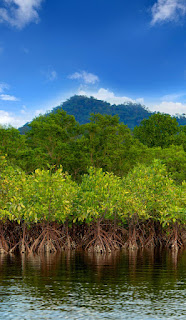We have a symbiotic relationship with nature and and we have to nurture nature for our future generations. And there needs to be a coordinated global focus to begin to make environmental conservation and natural resources a priority.
Reducing use of disposable items, saving more energy, and other environmentally conscious activities will only yield significant results if everyone is “cast in the same mold,” so to speak. High-impact global sustainable development lies within the responsibility of the government and large organizations including conglomerates. SM Prime Holdings, Inc. understands the role of environmental and has incorporated its sustainable practices in its developments early on. Through SM Prime’s Costa Del Hamilo Inc., a leader in the leisure resort industry and the movers behind Hamilo Coast – this premium seaside complex in Nasugbu, Batangas, fosters a tangible connection with nature. Marking its quindecennial year, Hamilo Coast looks back at its milestones and achievements with its core emphasis on sustainable development.
“Sustainability has been at the forefront of our vision in providing a resort lifestyle. We strive to practice both environmental and social sustainability in our operations through our partners and communities,” Franklin M. Bolalin, Assistant Vice President for Hamilo Estate Management, said.
Disaster risk reduction
Every year, the country deals with an average of 19 typhoons, with some often resulting in damages to properties and loss of life. Coastal defenses such as seawalls and breakwater structures are often implemented to resist storm surges. In the case of Hamilo Coast, mangrove trees are the key.
Hamilo Coast’s 100,000 square-meter or equivalent to 10 hectares mangrove belt is one of the largest mangrove areas in the municipality. The sustainable beach resort town has since planted 50,000 mangrove propagules, protected hand-in-hand with the conservation organization World Wide Fund for Nature (WWF) Philippines.
Biodiversity conservation
Apart from disaster mitigation, mangrove trees also benefit the climate by absorbing greenhouse gases (GHGs) and carbon dioxide. This capacity nurtures the ecosystem and biodiversity in the area, providing habitat for a wide array of species.
Hamilo is home to rich marine life and abundant flora and fauna. Its conservation programs and various sustainability initiatives have nurtured and conserved its precious biodiversity. There are about 96 various bird species found at the estate. Among these bird species are the rough-crested Malkoha and the Philippine eagle-owl.
From growing local plants to conducting regular coastal clean-up drives, coastal resource conservation initiatives are active in Hamilo Coast. With the help of WWF, they can increase their fisheries’ biological capacity and monitor their Marine Protected Areas (MPAs)—the Pico de Loro, Etayo and Santelmo coves which are among the three MPAs for Costa Del Hamilo’s Sustainable Development Project. Hamilo has been working with WWF since 2007 monitoring the health and viability of Hamilo Coast area.
In recognition of its conservation efforts, Hamilo Coast was cited by the World Wide Fund for Nature as its longest Sustainability Partner in 2020.
“Over the years, our partnership with SM significantly contributed to the impact we are making in our work in Hamilo Coast. From liquid waste and coral monitoring, to our present work on integrated waste management and food sheds, we hope that this continuing partnership would help us realize our vision of making Hamilo a holistic model of sustainability”, says Katherine Custodio, WWF-Philippines’ Executive Director.
Green buildings development
The path towards a sustainable future is paved with many interventions, including zero waste, dematerialization, zero emissions and resource efficiency practices. For its part, Hamilo Coast makes its intention to be a premiere sustainability community possible by making sure its buildings are designed with the environment in mind.
Some of the estate’s facilities are powered by alternative sources of energy. For example, its lamp posts use solar power more than traditional ones to function. Natural lighting and ventilation are also noticeable in some of its residential areas, which benefits the environment as well as its tenants. Additionally, Hamilo Coast implements a solid waste management plan that consists of recovery of materials and vermicomposting, among others.
Sustainable living
At Hamilo Coast’s core is how a distinct beachfront home can harmonize with its surrounding environment. As people crave for a more relaxed environment, closer to nature and the outdoors amid a work-from-home setup pushed by the ongoing pandemic, Hamilo homes give access to invigorating landscapes, coves to explore and the calming sea.
Fifteen years later, Hamilo Coast has surpassed its reputation as a weekend respite. It is now one of the best settlement options for people looking to live the coastal life in a sustainable community.
Some of the estate’s facilities are powered by alternative sources of energy. For example, its lamp posts use solar power more than traditional ones to function. Natural lighting and ventilation are also noticeable in some of its residential areas, which benefits the environment as well as its tenants. Additionally, Hamilo Coast implements a solid waste management plan that consists of recovery of materials and vermicomposting, among others.
Sustainable living
At Hamilo Coast’s core is how a distinct beachfront home can harmonize with its surrounding environment. As people crave for a more relaxed environment, closer to nature and the outdoors amid a work-from-home setup pushed by the ongoing pandemic, Hamilo homes give access to invigorating landscapes, coves to explore and the calming sea.
Fifteen years later, Hamilo Coast has surpassed its reputation as a weekend respite. It is now one of the best settlement options for people looking to live the coastal life in a sustainable community.

